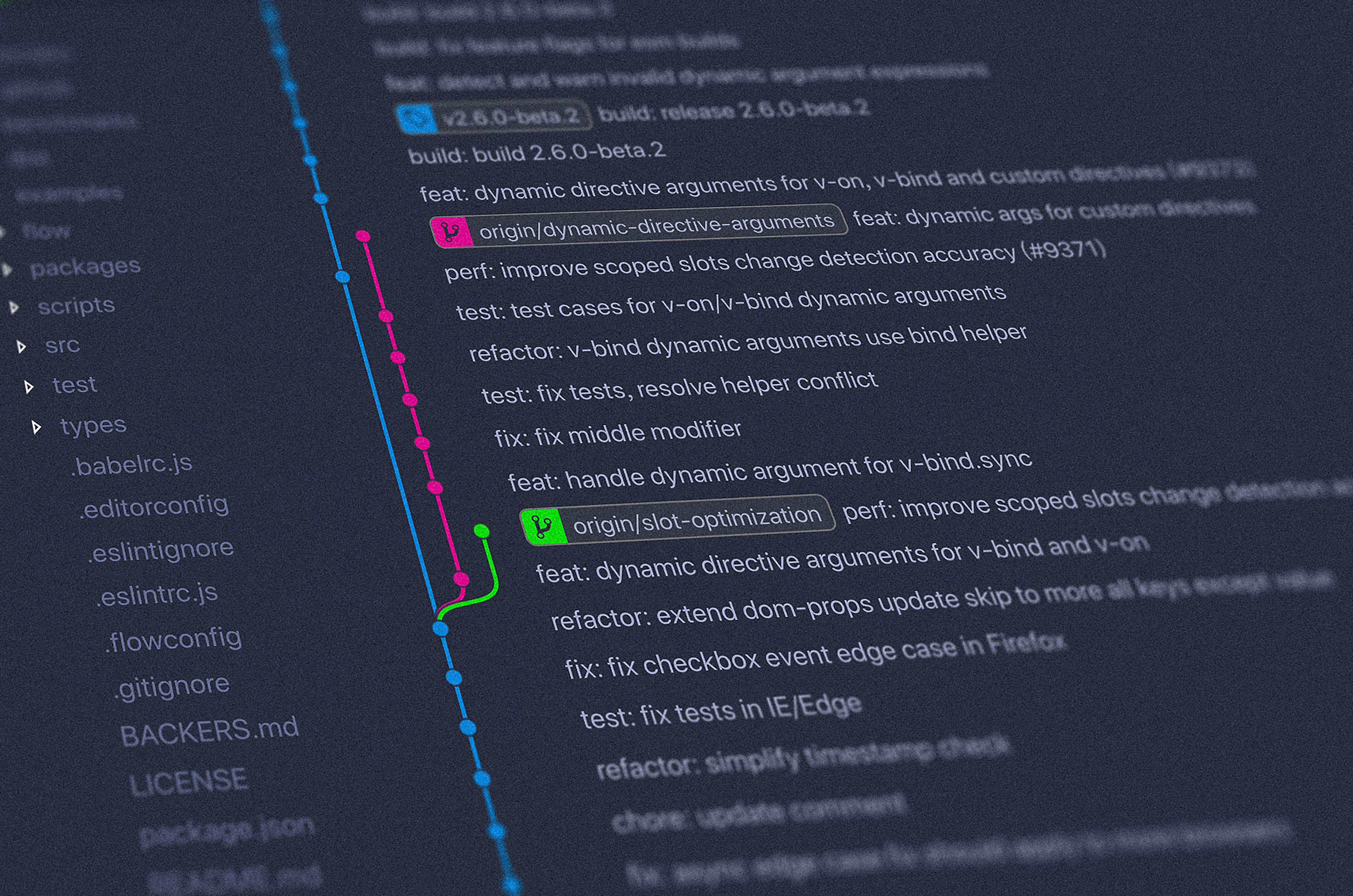AI-Driven Code Branching: The Evolution of Version Control
2025-06-06

Version control has been the backbone of collaborative software development for decades, with Git reigning as the undisputed champion for the past fifteen years. But as codebases grow increasingly complex and development teams become more distributed, even Git's powerful branching model is showing signs of strain. Enter AI-driven code branching—a paradigm shift that's transforming how developers manage parallel work streams, predict conflicts, and maintain code health across sprawling repositories.
The Limitations of Traditional Branching
Traditional version control systems rely on manual decision-making for branch creation, management, and merging. While this approach has served us well, it's beginning to show its limitations:
- Merge Conflict Blindness: Developers often create branches without visibility into potential merge conflicts until it's time to integrate their changes.
- Branch Sprawl: Large teams generate dozens or hundreds of branches, making management increasingly difficult.
- Integration Timing: Determining the optimal time to merge a feature branch is often guesswork.
- Knowledge Silos: Developers working in parallel often duplicate efforts or create incompatible implementations.
As one senior developer at Microsoft noted, "In repositories with thousands of contributors, we sometimes spend more time managing branches than writing actual code."
Predictive Conflict Detection
One of the most promising applications of AI in version control is predictive conflict detection. By analyzing code change patterns, AI systems can now warn developers about potential merge conflicts before they even occur.
# Example of an AI-powered conflict prediction system
from ai_version_control import ConflictPredictor
# Initialize the predictor with repository data
predictor = ConflictPredictor(repo_path="./my-project")
# Check if current changes will conflict with other branches
potential_conflicts = predictor.analyze_current_changes()
if potential_conflicts:
for conflict in potential_conflicts:
print(f"Potential conflict with branch {conflict.branch_name}")
print(f"File: {conflict.file_path}, Lines: {conflict.line_range}")
print(f"Conflict probability: {conflict.probability:.2f}")
print(f"Recommended action: {conflict.recommendation}")These systems don't just identify which files might conflict—they pinpoint specific code blocks and suggest resolution strategies. Some advanced implementations can even auto-resolve simple conflicts by learning from historical resolution patterns.
Intelligent Branch Management
AI is also transforming how we create and manage branches. Smart branching assistants can now recommend optimal branching strategies based on the nature of the changes being made.
// Example of AI-driven branch creation recommendation
const branchAssistant = require('ai-branch-assistant');
async function suggestBranchStrategy(codeChanges) {
const analysis = await branchAssistant.analyzeChanges(codeChanges);
console.log(`Change impact score: ${analysis.impactScore}`);
console.log(`Recommended branch type: ${analysis.recommendedBranchType}`);
console.log(`Suggested naming convention: ${analysis.suggestedNamingPattern}`);
if (analysis.shouldSplitChanges) {
console.log("Recommendation: Split these changes into multiple branches:");
analysis.suggestedBranches.forEach(branch => {
console.log(`- ${branch.name}: ${branch.purpose}`);
});
}
return analysis.createBranchCommand;
}These systems consider factors like:
- The scope and nature of code changes
- Historical patterns of successful branching strategies
- Team workflows and release schedules
- Code ownership and developer expertise
The result is a more structured, less chaotic branching strategy that aligns with project needs and reduces integration headaches.
Automated Integration Timing
Perhaps the most transformative aspect of AI-driven version control is the ability to determine the optimal time to merge a branch. Traditional approaches rely on arbitrary timing or manual code review completion, but AI systems can be much more sophisticated.
# Example of an AI integration timing advisor
from smart_vcs import IntegrationAdvisor
advisor = IntegrationAdvisor(branch="feature/user-authentication")
# Get integration readiness assessment
readiness = advisor.assess_readiness()
print(f"Branch health score: {readiness.health_score}/100")
print(f"Test coverage: {readiness.test_coverage}%")
print(f"Estimated review time: {readiness.estimated_review_time} minutes")
print(f"Optimal integration window: {readiness.suggested_integration_time}")
if readiness.blocking_factors:
print("Blocking factors:")
for factor in readiness.blocking_factors:
print(f"- {factor}")These systems analyze multiple factors to determine integration readiness:
- Current build status and test coverage
- Code review progress and feedback
- Dependency changes in the target branch
- Team availability for handling potential issues
- Historical patterns of successful integrations
By optimizing integration timing, teams can reduce the "integration hell" that often occurs when multiple branches are merged in rapid succession.
Collaborative Intelligence
AI-driven branch management also introduces the concept of "collaborative intelligence"—the ability to understand and coordinate the work happening across multiple branches simultaneously.
// Example of cross-branch awareness in TypeScript
import { CollaborationAnalyzer } from 'ai-code-collaboration';
async function analyzeTeamActivity() {
const analyzer = new CollaborationAnalyzer();
const teamActivity = await analyzer.getCurrentActivity();
// Find developers working on related components
const relatedWork = teamActivity.findRelatedWork('src/authentication');
console.log('Developers working on related components:');
relatedWork.forEach(activity => {
console.log(`${activity.developer} is working on ${activity.component}`);
console.log(`Branch: ${activity.branch}, Last active: ${activity.lastActive}`);
console.log(`Potential synergies: ${activity.potentialSynergies.join(', ')}`);
});
// Identify potential duplicate efforts
const duplicateEfforts = teamActivity.findPotentialDuplicates();
if (duplicateEfforts.length > 0) {
console.log('Warning: Potential duplicate efforts detected!');
duplicateEfforts.forEach(dup => {
console.log(`${dup.developers.join(' and ')} may be working on similar features`);
});
}
}This awareness helps prevent:
- Duplicate implementation efforts
- Incompatible approaches to solving the same problem
- Missed opportunities for collaboration
- Wasted effort on features that conflict with other work in progress
Conclusion
AI-driven code branching represents a fundamental shift in how we manage parallel development efforts. By bringing intelligence to version control, we're moving from a model of "branch and pray" to one of "branch with confidence." The benefits are substantial: fewer merge conflicts, more efficient collaboration, reduced integration problems, and ultimately faster delivery of high-quality software.
As these tools mature, we can expect version control to become less of a technical burden and more of a collaborative assistant—one that understands not just the code itself, but the complex human and technical factors that influence how code evolves. For development teams struggling with the complexity of modern software projects, AI-driven branching isn't just a nice-to-have—it's quickly becoming essential.
Enjoyed this article?
Subscribe to get notified when we publish more content like this.